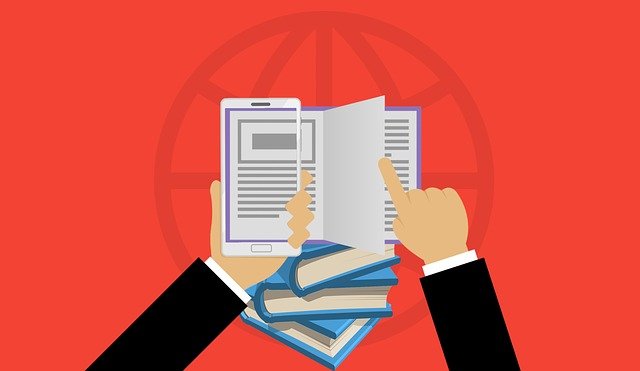Schooling is among the long list of activities that have been hit hard by COVID-19. In India, all schools nationwide were shut by March 19 with a lot of ambiguity on how they would function. All the fears surrounding this ambiguity came to life when the government asked the schools to move online, without addressing the massive digital divide that plagues India.
How digital was India before the pandemic?
A 2018 global survey conducted by Pew Research Centre showed that nearly 64% of Indian respondents owned a mobile phone, but only 24% owned a smartphone. Despite the rise in wireless users in recent years, urban and rural India are miles apart in their online presence. The 75th report of the National Sample Survey Office (NSSO 2017-18) shows that only 23.8% of households in India have access to the internet. The gap between rural and urban India is apparent, with only 14.9% of rural households and 42% of urban households having internet access.
This gap in access to the internet also spills over to the ability of people to use it – only 20.1% of Indian households can use the internet, with rural households at 13% and urban at 37.1%.
With these numbers, you can imagine the number of students that must have suffered when schools moved online.
Budget Private Schools & Rural India in the pandemic:
It is estimated that 92 million children in India are enrolled in Budget Private Schools (BPS) that offer education at affordable rates. BPS have been the hardest hit for a number of reasons. These schools sustain on extremely thin margins, given that they charge very little fees from parents. Moreover, the children in these schools belong to the most economically vulnerable section of society. Their families have been hit hard too, losing their capacity to pay school fees. Naturally, BPS didn’t have the resources to make a rapid shift to digital learning. Even if we look past the students’ ability to learn online, most BPS teachers are also ill-equipped for online teaching.
Coupled with parents’ inability to pay for their children’s education, many state governments also imposed a cap on fees. All of this made survival a huge challenge for these schools, leading to a number of them being put up for sale.
Access to quality education at K-12 and higher levels has been a challenge in rural India for many years. Now, with learning moving to an online mode, this challenge has further intensified for these students due to poor access to electricity, smartphones, computers and the internet.
About 20% of rural children have no textbooks at home, according to the Annual State of Education Report (ASER) survey conducted in September 2020. In the week of September when this survey was conducted, about one in three rural children had done no learning activity at all.
Still, the pandemic might have slightly helped in bridging the digital divide:
The 15th Annual Status of Education Report (ASER 2020) found that 10% of all rural households in India purchased a new smartphone in the pandemic to ensure that children were not cut off from education. It also reported that 60% of all students had access to a smartphone at home (in rural India). But these numbers might be hiding more than they reveal.
Heartbreaking stories like that of Kuldip Kumar, a man who sold his cow (his only source of income) to buy a smartphone for his children to continue their online education came to light during the pandemic, and he wasn’t the only struggling parent. Thousands, if not lakhs of parents have struggled to ensure the continued education of their children during the months of lockdown. This tells us just how important the financial inclusion of rural India is in today’s day and age. Livelihood and education shouldn’t be an either-or decision for anyone, especially when both of them are fundamental rights.
Thus, even though the numbers do paint a positive picture in terms of rural India’s journey towards digital education, they are far from comforting.
So, what should be done?
The digital divide in India has led to a massive learning loss for students in rural and urban areas alike. Access to technology and the internet is an urgent requirement and cannot be a luxury anymore, especially with this rising need for digitisation of education.
In times like these, realistic solutions lie in opening up the market for education. The Government of Odisha, for example, recently partnered with Tata Consultancy Services (TCS), to train teachers on the effective use of technology in teaching and to provide digital content to students. Following Odisha, other state governments should also reduce entry and regulatory barriers for ed-tech companies that are developing innovative solutions.
One of the biggest challenges ed-tech companies in India face is the lack of infrastructure in terms of availability of decent internet, access to laptops with optimal screen size, or even means to purchase devices for the family. Some regulatory barriers also hinder ed-tech penetration in India, for instance, all edtech services are under a relatively high 18% GST bracket. A tax relief, especially during COVID-19, could go a long way in ed-tech reaching as many Indians as possible.
I’m tempted to say that the government should encourage investment in ed-tech, but former RBI governor Raghuram Rajan counters that perfectly: “Let us not encourage anything; that might be the surest way of killing it. Instead, let us make sure we create a good business environment that can support any kind of activity, and then let our myriad entrepreneurs figure out what new and interesting businesses they will create.”
A global economic catastrophe strikes the world at least once every decade. Covid-19 has provided the much needed “look in the mirror” for India’s digital and educational infrastructure. It’s time we act fast.
Read more: How India saved its mothers with Direct Cash Transfers
Post Disclaimer
The opinions expressed in this essay are those of the authors. They do not purport to reflect the opinions or views of CCS.






